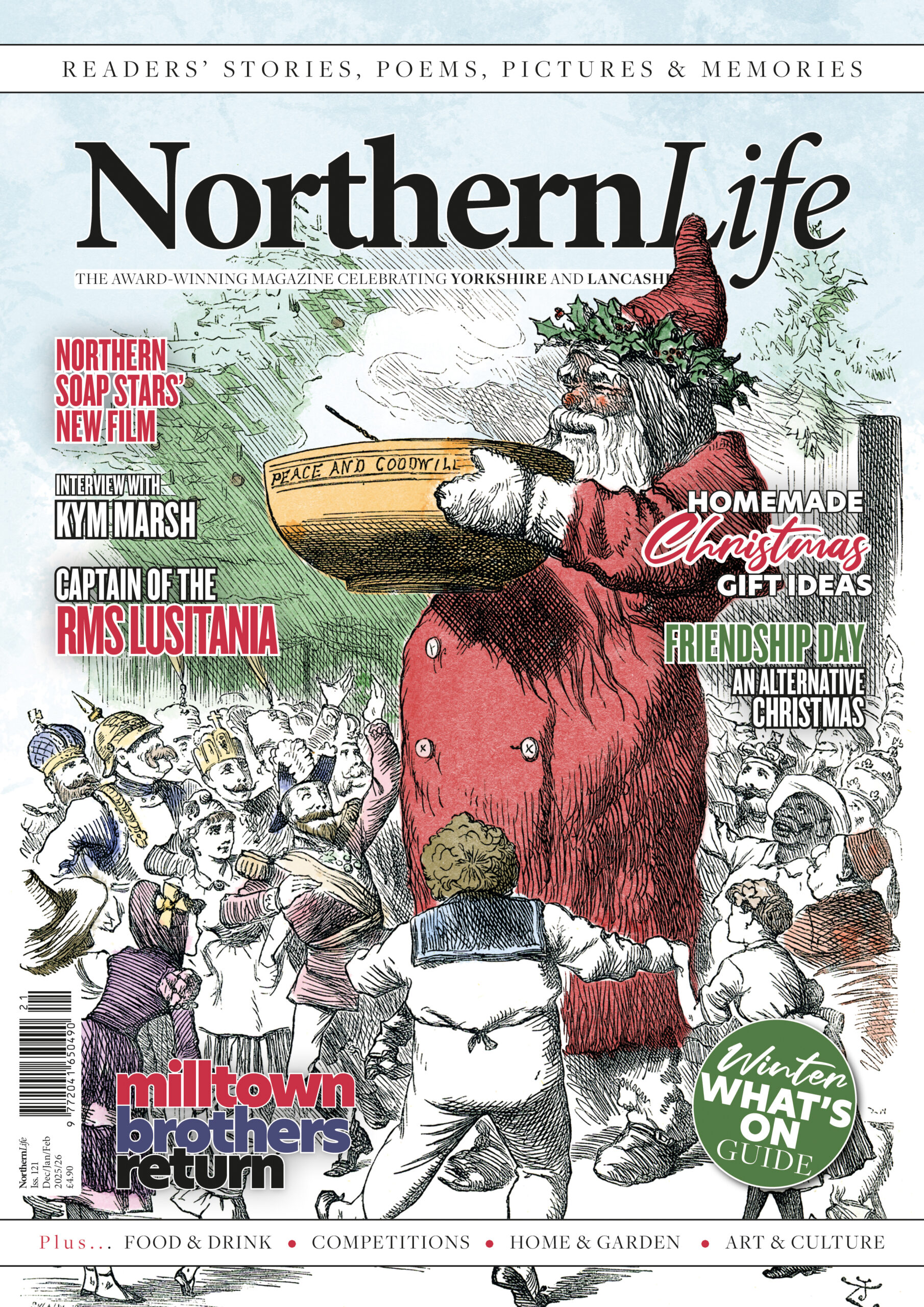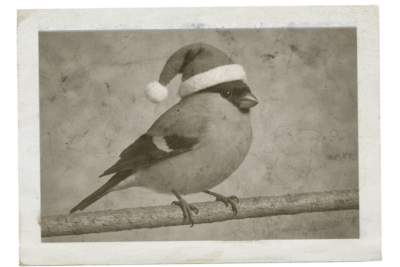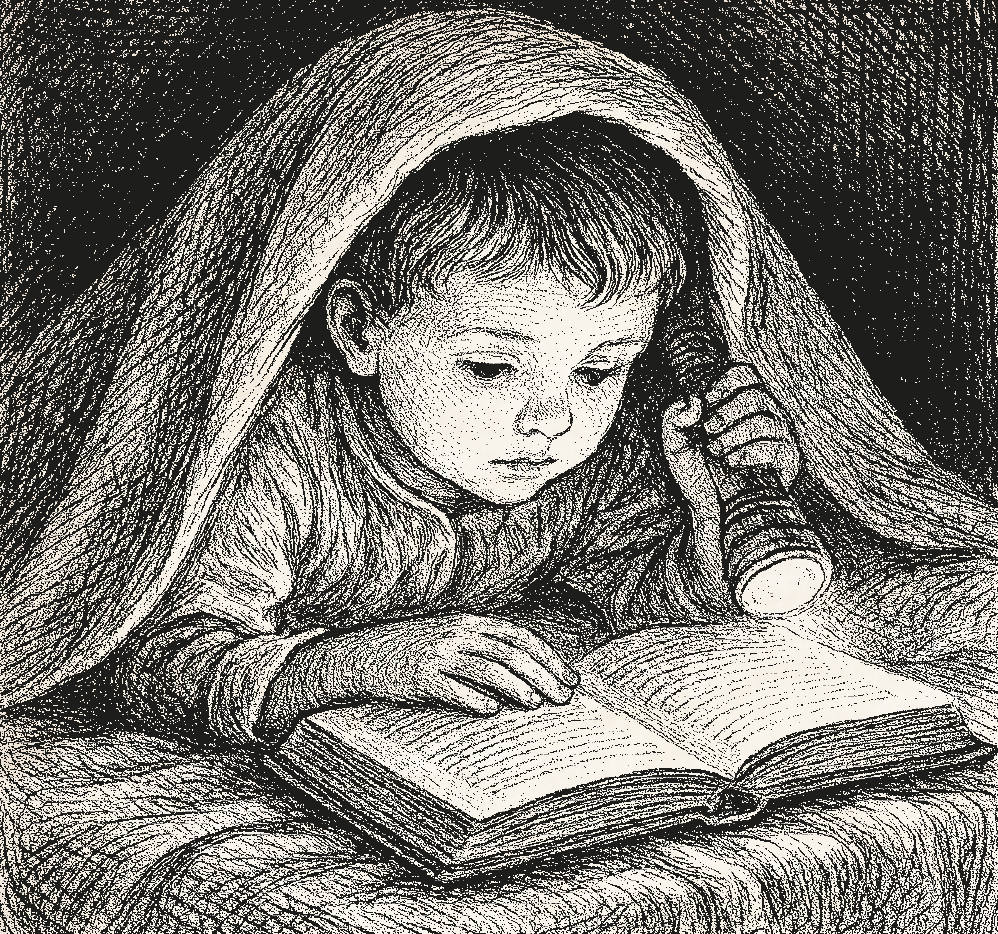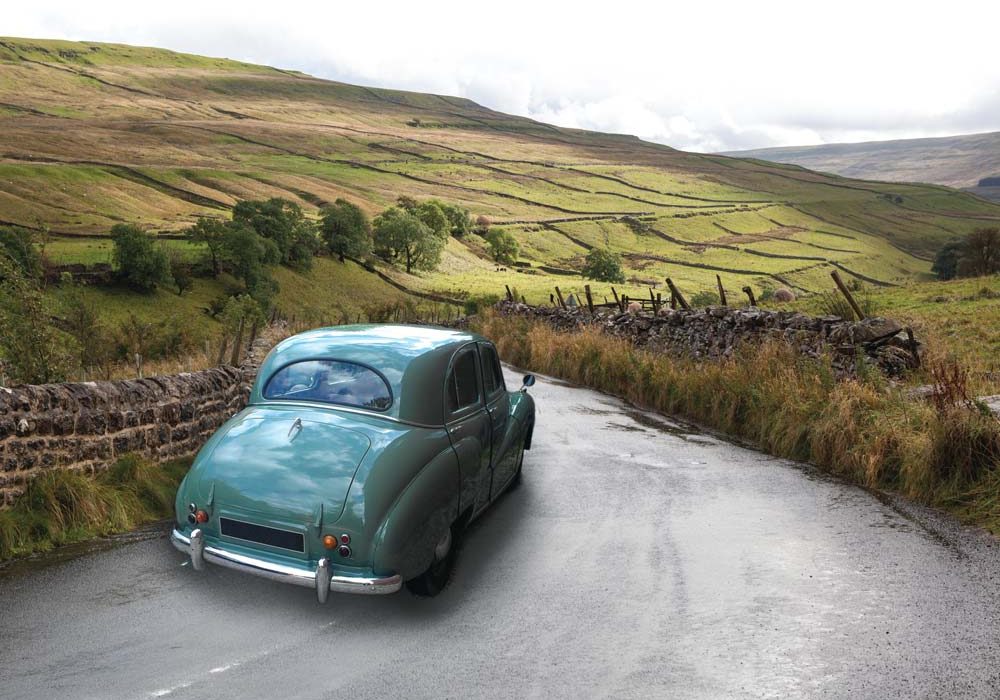
Return of the Native
by Neil Wilson
Just as a salmon returns to its spawning grounds to die so my grandfather Alan retired in 1950 to the village in North Yorkshire where he had been born, 61 years earlier in 1889 (a fortnight after Hitler as he liked to quip). There, in between siring nine sons – from 1887 to 1901 – but no daughters, Alan’s father ran the textile mill which had been in the family’s hands since 1792.
Alan had qualified as a doctor in 1913. Whilst in the Royal Army Medical Corps (RAMC) in the First World War he was decorated with the Military Cross in 1917. Like so many others he never spoke about his experiences (in France and Palestine) in that war. We do know that he continued to serve in the RAMC in the Army of Occupation in Germany until 1925. During that time he married Cosula (known as Connie), an 18 year old Greek girl who then bore him twin boys at the end of 1922.
“Traditional roles were adhered to, with Grandma doing all the cooking whilst Grandpa paid the bills and drove their car”
Upon his return to Britain Alan sought a partnership in general practice in Yorkshire but to no avail. Instead a friend in Wednesbury – a West Midlands town since subsumed into West Bromwich – asked Alan to join him in practice there. Tragedy struck some twenty years later when Connie died of cancer aged only 45 but Alan remarried shortly thereafter and on his retirement in 1950 my father, Cedric, took over Alan’s work in the practice.
To a young child – as I was in the 1950s – the journey of escape from our industrial “Black Country” home adjoining the surgery in Wednesbury to holiday with grandparents in rural “God’s Own County” seemed an almost heroic undertaking in that pre-motorway era. Our tubby Austin Somerset ambled up and down the rolling hills of Derbyshire, stopping (always) in Buxton to patronise the “Gents” and “Ladies”, before wheezing to the top of Holme Moss and then descending through Huddersfield and Keighley, to finally leave urban Yorkshire behind. After then meandering along country lanes we were eventually enfolded into the valley in which Alan’s village “nestled” – as estate agents would have it!
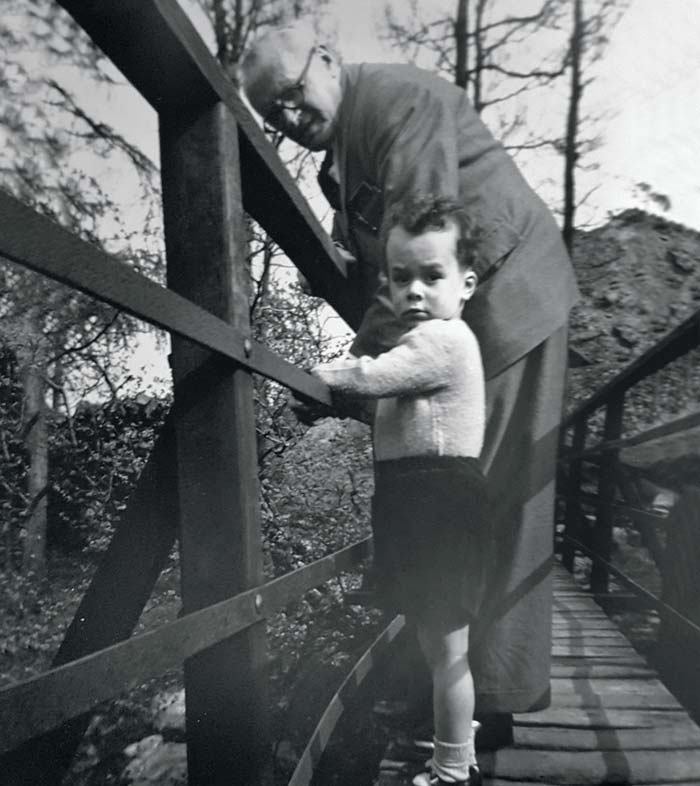 The whole journey – of 120 miles – took some four hours, even though there were no speed limits then, other than 30mph ones in built-up areas. In-car entertainment consisted of bickering with my younger brother on the slippery leather back seat, playing “I spy with my little eye something beginning with…”, or tormenting our parents with that classic query “are we nearly there yet?” Car radios were then an expensive option (in the days when even a heater was often not standard equipment) and found only in the likes of, for example, Rolls-Royces, Daimlers and Armstrong-Siddeleys.
The whole journey – of 120 miles – took some four hours, even though there were no speed limits then, other than 30mph ones in built-up areas. In-car entertainment consisted of bickering with my younger brother on the slippery leather back seat, playing “I spy with my little eye something beginning with…”, or tormenting our parents with that classic query “are we nearly there yet?” Car radios were then an expensive option (in the days when even a heater was often not standard equipment) and found only in the likes of, for example, Rolls-Royces, Daimlers and Armstrong-Siddeleys.
Of course the trip’s tribulations were quickly forgotten in the loving embrace of grandparents Alan and Frida on arrival at their cosy new house, built for them in 1949. That “Grandpa” and “Grandma” were however staunch traditionalists, brought up before World War One, showed in their dress: Freda never, ever, wore trousers but dresses or skirts to below the knee, with her sturdy legs always sheathed in stockings. Tall and confident it was easy to picture her in her pre-retirement post as the commanding Sister Tutor in a Midlands hospital. Alan’s standard attire in his work as a doctor had been a suit, and the only concession he had since made in retirement was the omission of a tie. The left breast pocket of the (usually light grey) suit jacket held a shiny metal box – about the size of a pack of cards – which contained the battery and works of a hearing aid. Wires connected this apparatus to a metal strip which bridged his bald head from behind one ear to the other. Amplified sounds were conducted along that strip, then through his skull to reach his inner ear. Rather than wear a wristwatch Alan’s favoured timepiece was the fob watch that he had been given on his coming of age (then 21) in 1910. This splendid gold timepiece sat in a pocket of his (shiny-backed) waistcoat, anchored to that garment by a gold chain.
“Grandpa” would not have known what DIY stood for, let alone done any, and this partly explains his customary attire which nowadays seems unnecessarily formal. Although his father’s fortunes as a mill owner fluctuated there were always maids and handymen around in the family home, and as was the case for other GPs between the two world wars Alan’s own marital home employed a cook, several maids and a gardener cum handyman. Upon retirement and downsizing however his household shrank to just himself and Grandma, aided by a cleaner from the village twice a week. Traditional roles were adhered to, with Grandma doing all the cooking (though Grandpa would help by, for example, “podding” peas) whilst Grandpa paid the bills and drove their car. He also fetched the milk in, not then by retrieving bottles of it outside their back door but taking a small churn to the milking parlour at Athol Smith’s farm in the middle of the village. (It was only later, in the early 1960s, that pasteurisation of milk meant milk was delivered to the doorstep). He would then walk another quarter mile to the village shop cum Post Office (alas, now gone) to pick up a newspaper and sundry supplies. As two of his brothers had never left the village (having run the mill) and another (also a doctor) had returned in retirement, there were several couples with the same surname – of Wilson – in the village. The couple who ran that village shop sorted all the resulting “Mrs. Wilsons” not by their own Christian names but those of their husbands – so items ordered by Freda, for example, would be labelled “Mrs Alan”. Nowadays this seems strikingly hostile – demeaning even – to women, but that was not the intention, as it was normal practice then, and indeed lingered on into the early 1980s, when my wife was labelled “Mrs. Neil” upon our settling in the same village. (This error was forcefully pointed out and never repeated!).
One of the pleasures of holidays is the enjoyment of a leisurely, full breakfast rather than that hastily consumed bowl of cereal before going to school or work. Grandma certainly appreciated this and fed us accordingly: we would wake to the unmistakeable clunk of her Rayburn oven door being opened and shut and the appetising aroma of bacon that then wafted up the stairs to us. The stout dining table was covered with a white linen tablecloth, on which gleamed neat ranks of silver-plated cutlery and willow pattern crockery. Beside each place setting a large napkin lay rolled up – within a broad ring carved from elephant tusk (sourced from Mogadishu by my father during his National Service there in 1950). We tucked into porridge – liberally laced with cream and brown sugar – before savouring that bacon, along with fried bread and (a family tradition this) casseroled kidneys. Toast and Grandma’s home-made Seville orange marmalade followed.
Thus well-fuelled my brother and I would then play in the beck that ran nearby, on its way to join the river Aire. We paddled through the chattering waters, shifting the millstone grit rocks about to form mini-dams whilst keeping a lookout for the elusive flash of orange and blue from a passing kingfisher. Very much more often we spotted nodding dippers and the languid flight of a heron, as sheep bleated in the surrounding fields and half a mile away lorries – heavily laden with limestone from the village quarry – groaned slowly up the steep hills out of the village. Sometimes we would walk back for lunch through the mill yard – a large square bounded on two sides by the three floors of the family’s mill and on the other two sides by terraced housing. Silent now, this space then reverberated with the rhythmic thrum and throb – “licketysplit, lickety-split” – of the looms within, and a very special treat was the guided tour round these seemingly tireless machines by Great Uncle Kenneth, who had upheld the tradition – as the oldest of nine brothers – of running the mill when he was younger. He took us through the design office where we marvelled at the complex patterns demanded by some designs and then into the wheelhouse where a mighty 45 foot diameter water wheel – reputed to be the largest indoor one in Britain – brooded on past glories in its dark, dank outhouse. Side-lined by the more dependable power of steam, and later, electricity it was still possible to imagine its iron paddles being filled with water from the beck that rushed past below, to turn the wooden spokes and hub and thereby the looms beyond.
As well as the two shops in the village then visiting vans sold a variety of goods, including fresh fish and household items such as brooms and dustpans, so most day-to-day requirements were met within the village. Moreover many residents did not have a car – essential these days now that there is no shop or bus service here – so older villagers in particular might then have only ventured forth on the bus just once a week Grandpa and Grandma sallied forth in their car to shop in nearby Skipton on Friday mornings. Like most women of her generation Grandma had never learned to drive.
Grandpa Alan therefore always took the helm of his pale grey Morris Minor while Grandma sat in the passenger seat clutching her wicker shopping baskets, as my brother and I bounced along on the back seat, intrigued by the occasional clunkclick (not of seat belts, for there were none then) of the orange-lit semaphore indicators springing out from the bodywork between the front and rear doors. Notwithstanding this dated method of signalling turns his car had attracted attention – “crowds” Grandpa would boast – when it was new in 1956, for although the very first Morris Minors had emerged in 1948 his was the first updated version to be delivered in Skipton, courtesy of Angus garages (now Peter Watsons). What drew attention to it was the single-piece windscreen (replacing a split one) and a larger rear window, neither of which would attract any attention nowadays!
While Grandma sought various sundry groceries Grandpa would sometimes take my brother and I to “Manbys”, a hardware store on the High Street. There men in long khaki coats quietly served customers from a vast selection of items, totting up the pounds, shillings and pence owed with pencilled calculations on the back of brown paper bags. Alas, this splendidly stocked emporium folded in the 1980s and is now a “womenswear” shop – “Phase Eight” – but a clock above the shop front displays the name “Manbys” still.
We would also visit the town library’s reading room, where we knew we had to be VERY quiet, if not practically silent, so as not to disturb the hushed calm of murmured asides and rustling newspapers, broken only by an occasional cough. And then it was time for the game Minor to tackle ascending the steep hills back, rewarding us along the way with panoramic vistas down the Aire valley, to light the coal fire in the lounge in winter and brew reviving tea in the kitchen on the Rayburn.
